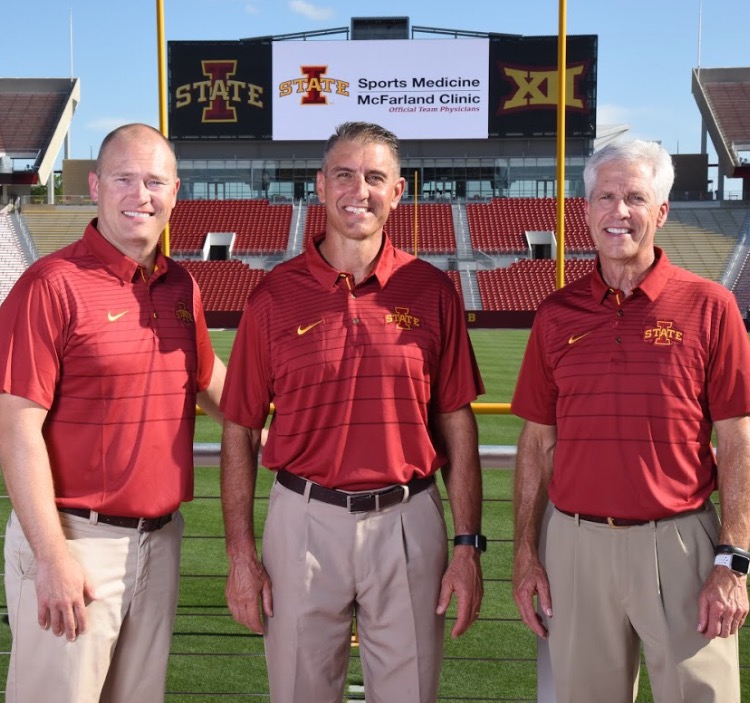Want to book an appointment with Dr. Warme? Call 515-239-3410 today or click on the banner ad below to visit the McFarland Clinic’s brand new sports medicine website.
While rotator cuff tears are very common in the 50-plus age group, they are relatively uncommon in 20 year-olds. However, every fall I do a handful of rotator cuff repairs on football players from Iowa State and the surrounding high schools.
The rotator cuff is a group of four tendons in the shoulder that help with shoulder movement and help keep this ball and socket joint congruent throughout its range of motion. Rotator cuff injuries typically occur in football with direct blows to the shoulder or when landing on the shoulder during a sack or after a diving catch.
The pain athletes feel is typically out over the deltoid, and the athlete typically is weak trying to lift his arm against resistance. If the tear is large, it is difficult to finish the season because of pain and shoulder dysfunction. Occasionally, we can get athletes with smaller tears through the season and then fix them surgically in the offseason.
Rotator cuff tears are incredibly painful and unfortunately, healing, recovery and return to sport can take months. Historically, cuff surgery was done through large, open incisions but recently, arthroscopic techniques have been developed.
Pictured above is an arthroscopic repair of a massive rotator cuff tear I recently performed. Arthroscopic rotator cuff surgery minimizes surgical pain and can be done on an outpatient basis.
Nationally, orthopedic surgeons are seeing a trend of quicker recovering with arthroscopic rotator cuff surgery. I believe this is because we can visualize the tears better through the scope than through open means, and we can access a larger area of the shoulder with multiple portal sites to get more anatomic repairs. As Orthopedic Sports Medicine continues to advance, arthroscopic techniques will continue to be developed as an alternative to open surgery, and this injury pattern highlights that trend.







